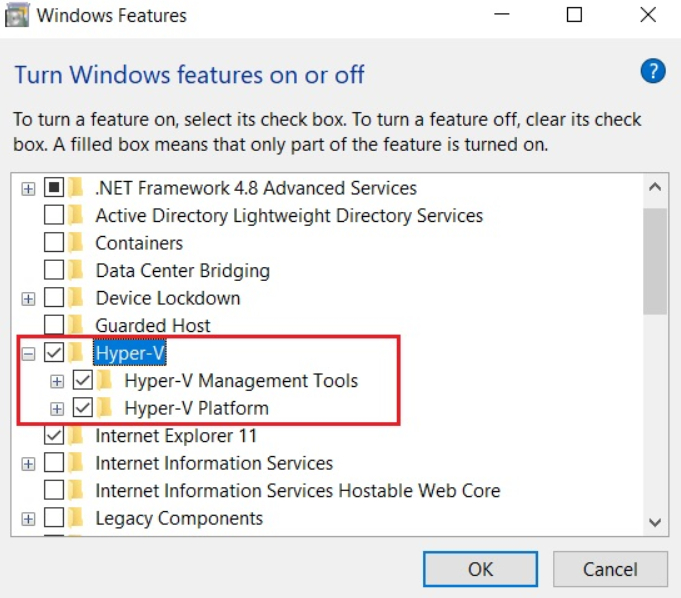

- ADD HYPER V TO WINDOWS 10 HOME HOW TO
- ADD HYPER V TO WINDOWS 10 HOME INSTALL
- ADD HYPER V TO WINDOWS 10 HOME FOR WINDOWS 10
- ADD HYPER V TO WINDOWS 10 HOME SOFTWARE
- ADD HYPER V TO WINDOWS 10 HOME WINDOWS 8.1
ADD HYPER V TO WINDOWS 10 HOME SOFTWARE
It can be used to test and evaluate new software without hurting the host system. Sometimes Hyper-V is very useful even for home users. PowerShell Disable-WindowsOptionalFeature -Online -FeatureName Microsoft-Hyper-V -AllĬommand Prompt DISM /Online /Disable-Feature /All /FeatureName:Microsoft-Hyper-V You can also do this using the command-line:
ADD HYPER V TO WINDOWS 10 HOME FOR WINDOWS 10
Hyper-V installer and enabler for Windows 10 Home (317 bytes, 34,226 hits)
ADD HYPER V TO WINDOWS 10 HOME INSTALL
Enable Virtualization Support from BIOS Enable Hyper-V in Windows 10 Homeįollow the steps below to install and enable Hyper-V in Windows 10 Home. You can go to the BIOS setup computer at the startup and enable Virtualization.

But some systems have virtualization disabled from BIOS. Most modern computers support all the requirements of Hyper-V. You can check the Hyper-V requirements section. You can check all these requirements by opening the Command Prompt ( Run –> cmd) and running the systeminfo command. There are four basic requirements for Hyper-V to be installed on a Windows 10 computer: Otherwise, you can use other virtualization platforms like Virtualbox and VMWare. Hardware virtualization is required for Hyper-V to function correctly. Does your system support virtualization?īefore moving forward, we need to check if our system supports virtualization.
ADD HYPER V TO WINDOWS 10 HOME HOW TO
However, using the steps in this article, we’ll show you how to enable Hyper-V in the Windows 10 Home edition. You can’t install it on Windows 10 Home Edition by default. Unfortunately, the Hyper-V feature is only available in Windows 10 Professional and Enterprise editions.
ADD HYPER V TO WINDOWS 10 HOME WINDOWS 8.1
It is available on Windows Server Operating Systems but Microsoft has added the Hyper-V functionality to Windows 8.1 and Windows 10. Once that’s all done, you can now import an existing VM or create a brand new one to start enjoying running a second OS in Hyper-V on your Windows 10 computer.Hyper-V is Microsoft’s virtualization platform. You may as well configure Hyper-V settings on this particular host to specify the default folder to store virtual disks and virtual machine configuration files. Private – if a virtual machine only runs on this host.Internal – if no need to get access to the physical network.


Boot into BIOS on your computer, enable Virtualization Technology under System Security. To get your computer prepared to run Hyper-V, make sure that the hardware virtualization support is enabled in the BIOS first. Most of the steps are the same as how to do it on Windows 8.1 with little differences. Here is a step-by-step guide on how to turn on Hyper-V feature and use it on Windows 10.


 0 kommentar(er)
0 kommentar(er)
